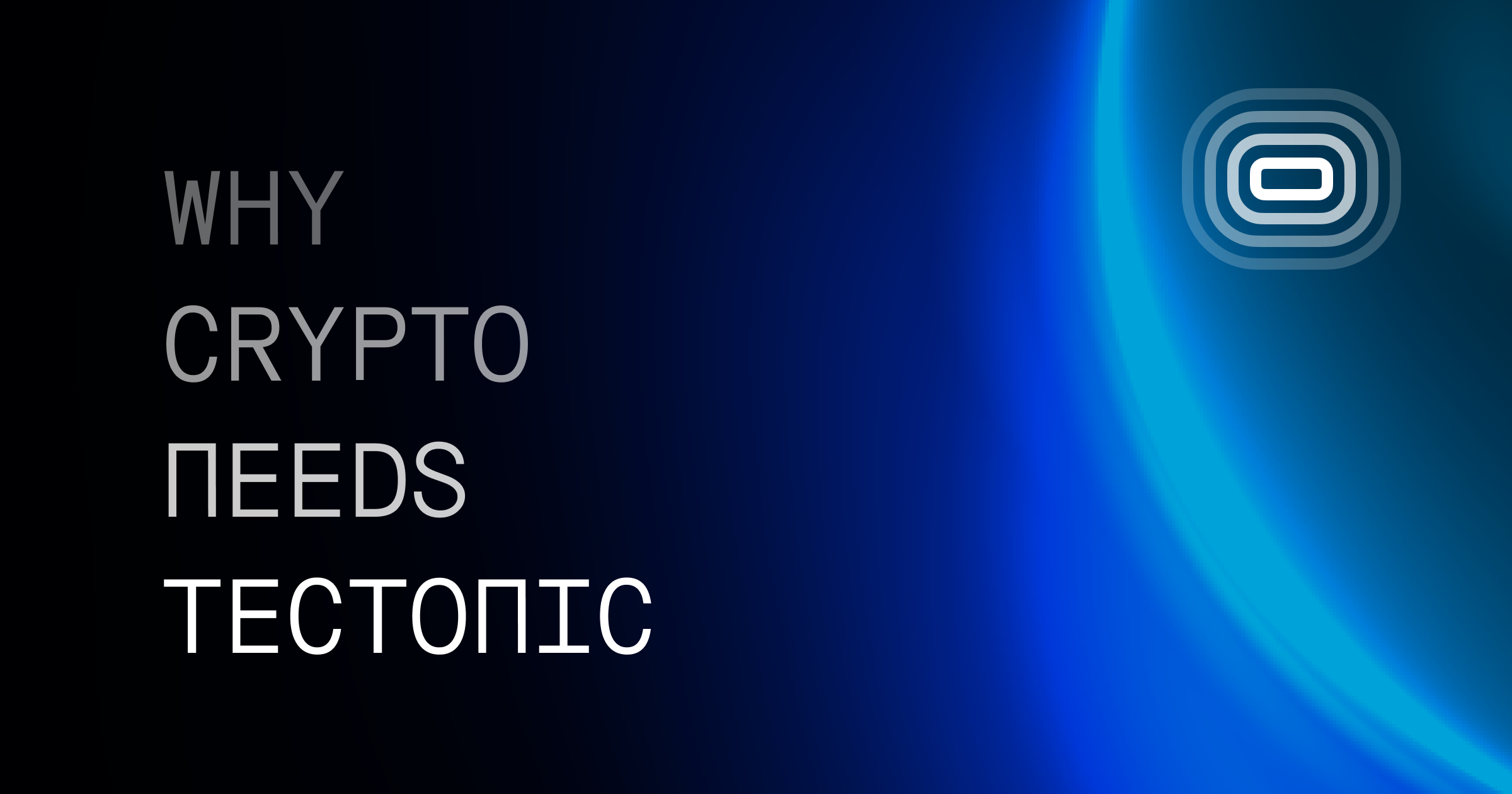
Why Crypto Needs Tectonic
With the quantum era upon us, the blockchain ecosystem is at a crucial crossroads. Tectonic has been created not just to survive in the quantum era, but to thrive in it.
Introduction
It is almost impossible to describe the impact crypto has had on our daily lives and the global economy. Countries like El Salvador have turned to Bitcoin for financial salvation, while the United States, Germany, Hong Kong, Russia, Brazil, and Poland are contemplating using it as a strategic reserve asset. President Trump's administration has also introduced crypto-specific positions and roles, a never-before-seen development.
This is just a small part of the bigger picture. Blockchain networks currently host a multi-billion-dollar decentralized application ecosystem. This incredibly diverse ecosystem includes sectors such as decentralized finance (DeFi), artificial intelligence (AI), DePIN, RWA, NFTs, and more.
Not only is crypto deeply embedded in the global ecosystem, but its underlying ethos of 'decentralization' and the open nature of the technology have attracted developers who are creating a highly innovative Web3 ecosystem. However, all these developments depend on a key assumption: safety.
Is Crypto In Danger?
Bitcoin and other digital assets promised unparalleled security, thanks to their underlying cryptography. However, what happens when this security itself is under threat? The shadow of quantum computers has been a looming concern for the crypto industry for some time. However, the threat became far more tangible after several technological advancements, including the release of Google Willow, a new quantum chip that significantly reduces errors as it scales. It's a well-known fact that current cryptographic measures used by cryptocurrencies are under threat from exponential advancements in quantum computing.
While naysayers may argue that the current generation of quantum computers poses no threat to Bitcoin and Ethereum, the industry cannot afford to be complacent for two major reasons.
First, some cryptocurrencies and their ecosystem have billions of dollars in liquidity locked in them. For many individuals, this represents their life savings, retirement funds, and in some cases, a source of income.
Second, the industry cannot afford to underestimate the pace at which technology evolves and advances. Look no further than ChatGPT and the ways AI has become an integral part of our daily lives. Another example is smartphones becoming an indispensable part of our daily lives in less than a decade. The relentless pace of innovation is becoming harder to keep up with.
Crypto needed to evolve yesterday, but there is another problem it must confront.
Change Isn't Easy
For Bitcoin, Ethereum, and other cryptocurrencies to become quantum-proof, they must fundamentally alter the core of their underlying cryptographic algorithm. To give you an idea of the magnitude of such a task, that's like taking a Ford Pinto and turning it into a GT40. It isn't impossible, but it requires immense work and a hard fork or two.
A hard fork is probably the biggest challenge for any blockchain. Bitcoin and Ethereum have both had their fair share of hard forks, dividing communities, and tanking the value of their respective tokens.
The solution to the threat posed by quantum computers is to build a blockchain from the ground up, ensuring it is resilient to these threats from the beginning. This is where Tectonic comes in.
Tectonic: Building The Post-Quantum Era
The current generation of blockchains was not built keeping quantum security, post-classical coordination, or threats from quantum computers in mind. Tectonic, a blockchain built to platform quantum protocols with classical communications, is a highly performant, EVM-compatible, Proof-of-Stake (PoS) blockchain that consists of an array of state-of-the-art post-quantum schemes wrapping a Proof-of-Stake blockchain, providing an execution stack protected against quantum threats.
A Post-Quantum Blockchain
Tectonic is the first EVM-compatible blockchain that is post-quantum secure, from the peer-to-peer (P2P) layer to the account model. It is committed to a post-quantum genesis approach, enabling post-quantum facilities right from inception. This ensures post-quantum security on both the execution and temporal axes. Tectonic's vision is to create a distributed and permissionless platform for quantum protocols, with classical communication, and to avoid future migrations.
The Tectonic blockchain isn't a hard fork or a redesign of an existing blockchain. It offers the industry a clean slate and opportunity to create digital systems, keeping the quantum threat in mind.
The Tectonic Stack
Let's look at the Tectonic stack architecture. The Tectonic stack uses state-of-the-art post-quantum cryptographic primitives to create a post-quantum secure, EVM-compatible execution stack.
-
Peer-To-Peer Layer - Tectonic's peer-to-peer layer handles communications across validators and verifiers outside the consensus layer. It is also responsible for broadcasting transactions, proposing blocks, executing the consensus protocol, and allowing validators to communicate with the consensus layer.
-
Consensus Layer - The Tectonic stack uses Byzantine Fault Tolerance (BFT) and Proof-of-Stake to reach consensus. It uses Malachite, a high-performance Rust implementation of Tendermint, which offers impressive performance, including sub-second finality and 500 transactions per second.
-
Virtual Machine - The virtual machine has two primary responsibilities: encode state changes mandated by user applications into transactions communicated to the network, track the consensus layer for the order of accepted transactions, and update the inner state.
In Closing
With the quantum era upon us, the blockchain ecosystem is at a crucial crossroads. Like any other technology, crypto must evolve. Tectonic has been created not just to survive in the quantum era, but to thrive in it. Tectonic is creating the foundation for a stronger, more reliable crypto ecosystem by building a quantum-resistant foundation.
About the Author
Cofounder, CEO
GRANT STANLEY
Computer Science, Columbia University. Six years of native experience building in the blockchain industry.